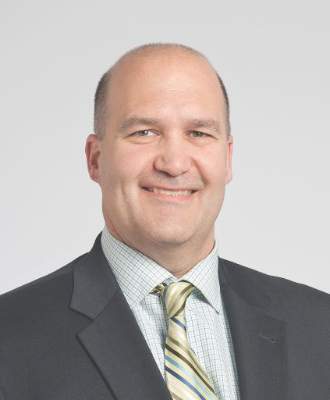User login
Interventional Chest/Diagnostic Procedures
The use of bronchoscopically deployed valves for the treatment of bronchopleural fistula has been reported broadly. Currently, the Spiration IBV™ is approved as a Humanitarian Device by FDA for use in “prolonged air leaks of the lung or significant air leaks that are likely to become prolonged air leaks, following lobectomy, segmentectomy, or lung volume reduction surgery” (Spiration IBV Instructions For Use URL www.spiration.com/IFU). In the absence of extensive study, this technique has been granted several CPT codes for placement (31647 and 31651) and removal (31649) and the accompanying balloon occlusion to identify the leak (31634) (Kovitz et al. CHEST. 2013;144[2]:661). Success has been widely reported and complications rare. Interesting, the most widely reported use of these devices is for nonapproved indications. Valves have been used in patients in the ICU on ventilators and ECMO (Mahajan et al. J Thorac Cardiovasc Surg. 2013;145[3]:626); in patients with CF bronchiectasis as a bridge to transplant, for complications of TB and various other disease-specific spontaneous as well as iatrogenic complications (Fischer et al. J Heart Lung Transplant. 2012;31:334) (El-Sameed et al. Lung. 2012;190[3]:347). In most cases, precise balloon localization is performed but also total lobar treatment reported. The largest series by Travaline et al. (CHEST. 2009;136[2]:355), with 40 patients, only 8 of 40 had postsurgical indications; 1-9 Emphasys EBV valves were used; and there was a median air leak of 119 days prior to valve implantation with 93% of patients improving. Therefore, the largest study available is not the approved device, not the approved indication, and not the typical patient for which the cost-saving indication of early postoperative air leaks could be made. This certainly more reflects the clinical challenges of these complex patients present leaving us with an untenable clinical problem.
Reimbursement data are lacking. Medicare claims data will not be available until 2016, and coverage decisions are spotty because of the “experimental” designation. Since these devices are greater than $2,000 each and one to four valves are used in each case with higher numbers reported, this technique requires a high risk to institutions. While there may be cost savings for treatment of patients confined to the hospital for prolonged air leak to expedite discharge of approved and unapproved indications under the DRG; outpatient management make these devices cost prohibitive in the absence of positive coverage decisions. Further investigation of actual utility in the wide range of possible off-label indications, complications, and cost effectiveness is desperately needed before institutions take on the financial risks of offering valve treatment. Standard thoracic surgery management and/or other potentially less expensive techniques must be explored first until valve therapy is further defined.
Thoracic Oncology
In a landmark decision, the Centers for Medicare & Medicaid Services announced in February a final national coverage determination providing for Medicare coverage of lung cancer screening with low-dose CT scanning (LDCT) (http://www.cms.gov/medicare-coverage-database/details/nca-decision-memo.aspx?NCAId=274; http://www.cms.gov/Newsroom/MediaReleaseDatabase/Press-releases/2015-Press-releases-items/2015-02-05.html). CMS indicated that coverage would be effective immediately, though codes for the various services associated with the lung cancer screening process are still forthcoming.
Several members of the CHEST Thoracic Oncology NetWork contributed to the recent joint ACCP/ATS Policy Statement on lung cancer screening, which helped inform the CMS decision (Mazzone et al. CHEST. 2015;147[2]:295). The policy statement defines nine components necessary for high-quality lung cancer screening programs:
1. Who is offered screening? Adults aged 55-77 years with at least a 30 pack-year history of smoking, currently smoking, or having quit within the past 15 years. Note: Screening may not be appropriate for patients with substantial comorbid conditions.
2. How often and for how long to screen? Screening should be performed annually until age 77 years and discontinued if smoking has ceased for 15 years or if health problems develop that limit life expectancy or the ability/willingness to undergo curative treatment.
3. How the CT is performed. LDCT should be performed according to ACR-STR specifications, including compliance with recommended mean radiation dose.
4. Lung nodule identification. Establish a standard approach defining a “positive” finding, based on nodule size and characteristics.
5. Structured reporting. Establish use of a structured reporting system for description of nodules.
6. Lung nodule management algorithms. Develop standardized approaches to lung nodule management, including access to technology and technical expertise for nodule evaluation (PET imaging, minimally invasive thoracic surgery, nonsurgical approaches, etc), and incorporate a tracking system for nodule management and patient/provider communication.
7. Smoking cessation. Screening programs must have an integrated smoking cessation program.
8. Patient and provider education. Providers and patients should be educated in the benefits and harms of screening to inform decision support discussions, with development of educational materials and tools.
9. Data collection. Screening programs should collect data relating to program quality, as outlined above. Data should be collected about screening outcomes (complications, cancer diagnoses, survival, etc). An annual summary should be reported to an oversight body with the authority to credential screening programs.
For the full policy statement: Mazzone et al. Components necessary for high-quality lung caner screening: American College of Chest Physicians and American Thoracic Society Policy Statement. CHEST. 2015;147[2]:295.
Interventional Chest/Diagnostic Procedures
The use of bronchoscopically deployed valves for the treatment of bronchopleural fistula has been reported broadly. Currently, the Spiration IBV™ is approved as a Humanitarian Device by FDA for use in “prolonged air leaks of the lung or significant air leaks that are likely to become prolonged air leaks, following lobectomy, segmentectomy, or lung volume reduction surgery” (Spiration IBV Instructions For Use URL www.spiration.com/IFU). In the absence of extensive study, this technique has been granted several CPT codes for placement (31647 and 31651) and removal (31649) and the accompanying balloon occlusion to identify the leak (31634) (Kovitz et al. CHEST. 2013;144[2]:661). Success has been widely reported and complications rare. Interesting, the most widely reported use of these devices is for nonapproved indications. Valves have been used in patients in the ICU on ventilators and ECMO (Mahajan et al. J Thorac Cardiovasc Surg. 2013;145[3]:626); in patients with CF bronchiectasis as a bridge to transplant, for complications of TB and various other disease-specific spontaneous as well as iatrogenic complications (Fischer et al. J Heart Lung Transplant. 2012;31:334) (El-Sameed et al. Lung. 2012;190[3]:347). In most cases, precise balloon localization is performed but also total lobar treatment reported. The largest series by Travaline et al. (CHEST. 2009;136[2]:355), with 40 patients, only 8 of 40 had postsurgical indications; 1-9 Emphasys EBV valves were used; and there was a median air leak of 119 days prior to valve implantation with 93% of patients improving. Therefore, the largest study available is not the approved device, not the approved indication, and not the typical patient for which the cost-saving indication of early postoperative air leaks could be made. This certainly more reflects the clinical challenges of these complex patients present leaving us with an untenable clinical problem.
Reimbursement data are lacking. Medicare claims data will not be available until 2016, and coverage decisions are spotty because of the “experimental” designation. Since these devices are greater than $2,000 each and one to four valves are used in each case with higher numbers reported, this technique requires a high risk to institutions. While there may be cost savings for treatment of patients confined to the hospital for prolonged air leak to expedite discharge of approved and unapproved indications under the DRG; outpatient management make these devices cost prohibitive in the absence of positive coverage decisions. Further investigation of actual utility in the wide range of possible off-label indications, complications, and cost effectiveness is desperately needed before institutions take on the financial risks of offering valve treatment. Standard thoracic surgery management and/or other potentially less expensive techniques must be explored first until valve therapy is further defined.
Thoracic Oncology
In a landmark decision, the Centers for Medicare & Medicaid Services announced in February a final national coverage determination providing for Medicare coverage of lung cancer screening with low-dose CT scanning (LDCT) (http://www.cms.gov/medicare-coverage-database/details/nca-decision-memo.aspx?NCAId=274; http://www.cms.gov/Newsroom/MediaReleaseDatabase/Press-releases/2015-Press-releases-items/2015-02-05.html). CMS indicated that coverage would be effective immediately, though codes for the various services associated with the lung cancer screening process are still forthcoming.
Several members of the CHEST Thoracic Oncology NetWork contributed to the recent joint ACCP/ATS Policy Statement on lung cancer screening, which helped inform the CMS decision (Mazzone et al. CHEST. 2015;147[2]:295). The policy statement defines nine components necessary for high-quality lung cancer screening programs:
1. Who is offered screening? Adults aged 55-77 years with at least a 30 pack-year history of smoking, currently smoking, or having quit within the past 15 years. Note: Screening may not be appropriate for patients with substantial comorbid conditions.
2. How often and for how long to screen? Screening should be performed annually until age 77 years and discontinued if smoking has ceased for 15 years or if health problems develop that limit life expectancy or the ability/willingness to undergo curative treatment.
3. How the CT is performed. LDCT should be performed according to ACR-STR specifications, including compliance with recommended mean radiation dose.
4. Lung nodule identification. Establish a standard approach defining a “positive” finding, based on nodule size and characteristics.
5. Structured reporting. Establish use of a structured reporting system for description of nodules.
6. Lung nodule management algorithms. Develop standardized approaches to lung nodule management, including access to technology and technical expertise for nodule evaluation (PET imaging, minimally invasive thoracic surgery, nonsurgical approaches, etc), and incorporate a tracking system for nodule management and patient/provider communication.
7. Smoking cessation. Screening programs must have an integrated smoking cessation program.
8. Patient and provider education. Providers and patients should be educated in the benefits and harms of screening to inform decision support discussions, with development of educational materials and tools.
9. Data collection. Screening programs should collect data relating to program quality, as outlined above. Data should be collected about screening outcomes (complications, cancer diagnoses, survival, etc). An annual summary should be reported to an oversight body with the authority to credential screening programs.
For the full policy statement: Mazzone et al. Components necessary for high-quality lung caner screening: American College of Chest Physicians and American Thoracic Society Policy Statement. CHEST. 2015;147[2]:295.
Interventional Chest/Diagnostic Procedures
The use of bronchoscopically deployed valves for the treatment of bronchopleural fistula has been reported broadly. Currently, the Spiration IBV™ is approved as a Humanitarian Device by FDA for use in “prolonged air leaks of the lung or significant air leaks that are likely to become prolonged air leaks, following lobectomy, segmentectomy, or lung volume reduction surgery” (Spiration IBV Instructions For Use URL www.spiration.com/IFU). In the absence of extensive study, this technique has been granted several CPT codes for placement (31647 and 31651) and removal (31649) and the accompanying balloon occlusion to identify the leak (31634) (Kovitz et al. CHEST. 2013;144[2]:661). Success has been widely reported and complications rare. Interesting, the most widely reported use of these devices is for nonapproved indications. Valves have been used in patients in the ICU on ventilators and ECMO (Mahajan et al. J Thorac Cardiovasc Surg. 2013;145[3]:626); in patients with CF bronchiectasis as a bridge to transplant, for complications of TB and various other disease-specific spontaneous as well as iatrogenic complications (Fischer et al. J Heart Lung Transplant. 2012;31:334) (El-Sameed et al. Lung. 2012;190[3]:347). In most cases, precise balloon localization is performed but also total lobar treatment reported. The largest series by Travaline et al. (CHEST. 2009;136[2]:355), with 40 patients, only 8 of 40 had postsurgical indications; 1-9 Emphasys EBV valves were used; and there was a median air leak of 119 days prior to valve implantation with 93% of patients improving. Therefore, the largest study available is not the approved device, not the approved indication, and not the typical patient for which the cost-saving indication of early postoperative air leaks could be made. This certainly more reflects the clinical challenges of these complex patients present leaving us with an untenable clinical problem.
Reimbursement data are lacking. Medicare claims data will not be available until 2016, and coverage decisions are spotty because of the “experimental” designation. Since these devices are greater than $2,000 each and one to four valves are used in each case with higher numbers reported, this technique requires a high risk to institutions. While there may be cost savings for treatment of patients confined to the hospital for prolonged air leak to expedite discharge of approved and unapproved indications under the DRG; outpatient management make these devices cost prohibitive in the absence of positive coverage decisions. Further investigation of actual utility in the wide range of possible off-label indications, complications, and cost effectiveness is desperately needed before institutions take on the financial risks of offering valve treatment. Standard thoracic surgery management and/or other potentially less expensive techniques must be explored first until valve therapy is further defined.
Thoracic Oncology
In a landmark decision, the Centers for Medicare & Medicaid Services announced in February a final national coverage determination providing for Medicare coverage of lung cancer screening with low-dose CT scanning (LDCT) (http://www.cms.gov/medicare-coverage-database/details/nca-decision-memo.aspx?NCAId=274; http://www.cms.gov/Newsroom/MediaReleaseDatabase/Press-releases/2015-Press-releases-items/2015-02-05.html). CMS indicated that coverage would be effective immediately, though codes for the various services associated with the lung cancer screening process are still forthcoming.
Several members of the CHEST Thoracic Oncology NetWork contributed to the recent joint ACCP/ATS Policy Statement on lung cancer screening, which helped inform the CMS decision (Mazzone et al. CHEST. 2015;147[2]:295). The policy statement defines nine components necessary for high-quality lung cancer screening programs:
1. Who is offered screening? Adults aged 55-77 years with at least a 30 pack-year history of smoking, currently smoking, or having quit within the past 15 years. Note: Screening may not be appropriate for patients with substantial comorbid conditions.
2. How often and for how long to screen? Screening should be performed annually until age 77 years and discontinued if smoking has ceased for 15 years or if health problems develop that limit life expectancy or the ability/willingness to undergo curative treatment.
3. How the CT is performed. LDCT should be performed according to ACR-STR specifications, including compliance with recommended mean radiation dose.
4. Lung nodule identification. Establish a standard approach defining a “positive” finding, based on nodule size and characteristics.
5. Structured reporting. Establish use of a structured reporting system for description of nodules.
6. Lung nodule management algorithms. Develop standardized approaches to lung nodule management, including access to technology and technical expertise for nodule evaluation (PET imaging, minimally invasive thoracic surgery, nonsurgical approaches, etc), and incorporate a tracking system for nodule management and patient/provider communication.
7. Smoking cessation. Screening programs must have an integrated smoking cessation program.
8. Patient and provider education. Providers and patients should be educated in the benefits and harms of screening to inform decision support discussions, with development of educational materials and tools.
9. Data collection. Screening programs should collect data relating to program quality, as outlined above. Data should be collected about screening outcomes (complications, cancer diagnoses, survival, etc). An annual summary should be reported to an oversight body with the authority to credential screening programs.
For the full policy statement: Mazzone et al. Components necessary for high-quality lung caner screening: American College of Chest Physicians and American Thoracic Society Policy Statement. CHEST. 2015;147[2]:295.


